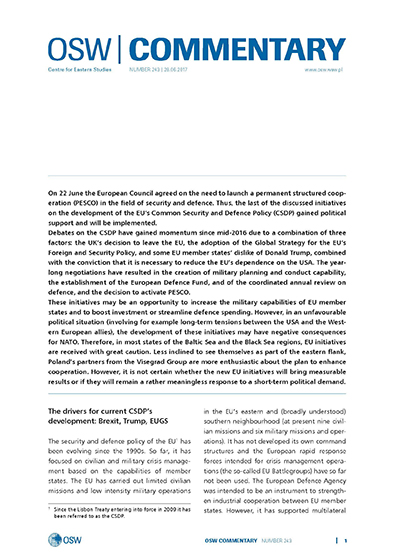The current state, problems and future of Germany’s air and missile defence
The current state, problems and future of Germany’s air and missile defence
Author(s): Justyna Gotkowska
Subject(s): Security and defense, Military policy
Published by: OSW Ośrodek Studiów Wschodnich im. Marka Karpia
Keywords: Germany; air defence; missile defence
Summary/Abstract: From German point of view, air and missile defence systems are of little relevance for the protection of Germany’s territory. However, they are seen as important for conducting ‘out of area’ operations, providing military assistance to allies, and for Germany’s political and military-technical position within NATO.The Bundeswehr has been modernising its air and missile defence systems for several years. The modernisation of very short-range and short-range systems is slightly behind schedule. Plans to modernise the medium-range air and missile defence have been encountering problems since the United States decided to refrain from buying the jointly developed MEADS system. Therefore Germany is currently considering using the results of the MEADS program in the development of its own medium-range air and missile defence system, possibly in co-operation with France and Italy. Such a system would ensure protection against short-range ballistic missiles (up to 1000 km) and might become part of NATO’s ballistic missile defence, replacing the Patriot batteries which Germany is currently operating. Furthermore, Germany could expand its involvement in NATO’s ballistic missile defence in the future by buying or developing system to intercept medium- and intermediate-range ballistic missiles (up to 3000 km and 5500 km). The final decision on this matter has not yet been taken, and will be left for the successive governments of Germany to resolve. It will depend on a number of political, military and financial factors.
Series: OSW Commentary
- Page Count: 8
- Publication Year: 2013
- Language: English
- Content File-PDF

